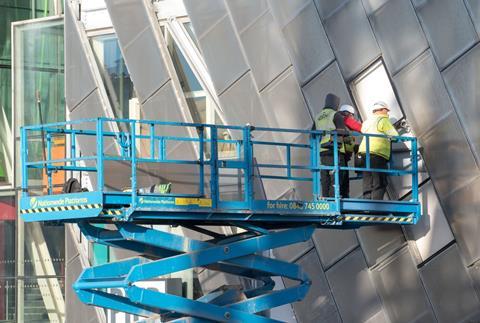All parts of the construction industry bear responsibility for crisis, CPA boss says following breakdown of government talks

Architects need to contribute to the government’s £4bn cladding fund, the boss of the product sector’s leading trade body has said.
Construction Products Association (CPA) chief executive Peter Caplehorn said materials firms and housebuilders were not the only sectors responsible for the cladding crisis and the government should look at a “broader picture”.
The comments follow last week’s dramatic end to negotiations between the government and the CPA over the product sector’s financial contributions towards the costs of remediating unsafe buildings.
Housing secretary Michael Gove said he considered the talks to have “concluded” after no agreement was reached and promised to do “whatever it takes” to hold the sector to account, including pursuing firms through the courts.
He accused manufacturers of failing to show leadership by not agreeing to a funding settlement and warned that there would be “significant commercial and reputational consequences for those firms that have not stepped up”.

The government said that 35 housebuilders have now signed up to its cladding pledge to fix building safety issues on residential blocks and has called on products firms to play their part as well.
While the country’s biggest housebuilders, including Barratt, Persimmon and Taylor Wimpey, have signed the pledge, the executive chair of the industry body that represents them, the Home Builders Federation, said other parts of the building industry now needed to put their hands in their pockets as well.
Stewart Baseley added: “I think other actors who are equally involved in this – construction product manufacturers, contractors, freeholders, overseas developers – [should also pay].”
Caplehorn told Building the government had been aiming for a “simple solution” to a problem that he said was complex and needed the involvement of all parts of the construction industry, including designers and contractors.
“There’s a lot of other parts of the industry that need to be part of the conversation,” he said, adding that a funding settlement should include “everybody involved…who had authority in how these buildings were put together”.
Asked how contractors would be able to afford the costs involved, he said: “I get that different parts of the industry have different business models but I think it’s important that they are part of the discussion and it would not be beyond the wit of man to invent a contribution system which is proportionate.”
In a letter to the CPA last week, Gove said product manufacturers had used the scale of the problem as “an excuse to do nothing, slowly”.
But Caplehorn said it had undertaken a “significant amount of proactive comment, proactive action, it just doesn’t fit totally with the formula or the way of looking at it that has come forward from the secretary of state”.
He added: “You can’t just say ‘right we are going to put a whole lot of money in a pot and then go out and sort out some buildings’.
“We need to figure out exactly how the process is done and who is contributing and how they are contributing and I think that is really quite a complicated set of criteria.”
Last month, the CPA had said that it had been unable to reach a consensus among its members on funding contributions because of insufficient data on the amount of work required on buildings.
The group said that a survey of each affected building needed to be undertaken to identify safety issues. Gove responded by saying that leaseholders “do not have the luxury of waiting years for every building to be assessed before funding is committed”.
Caplehorn admitted that there was not time to carry out an investigation of every building but added that “in order to spend any funding wisely you would need to know that information before you start the work.
“I sympathise greatly with people saying we’re trying to make this too complicated and we’re trying to see what we can do to delay things, but that’s not true.
“It is a case that buildings are complicated and where we actually have buildings where we don’t know what is installed and therefore you’re discovering this stuff for the first time when you take it apart it is difficult and it has to be worked through which is why the process has to be logical.”
Caplehorn said that manufacturers are now “extremely concerned” about where the current situation will lead and admitted that the sector was now in a “worse situation” than it was when talks with the government were still ongoing.
Since January, the government has been carrying out talks with both the housing and construction products sectors over industry contributions towards ending the building safety crisis.
Gove’s letter to the CPA followed the government announcing all the major housebuilders had signed a pledge to fix building safety problems in their own properties.
The Department for Levelling Up, Housing and Communities said in a statement that any of the companies that remained to make the pledge would be blocked from building and selling new homes under powers also tabled in the Building Safety Bill.
















4 Readers' comments